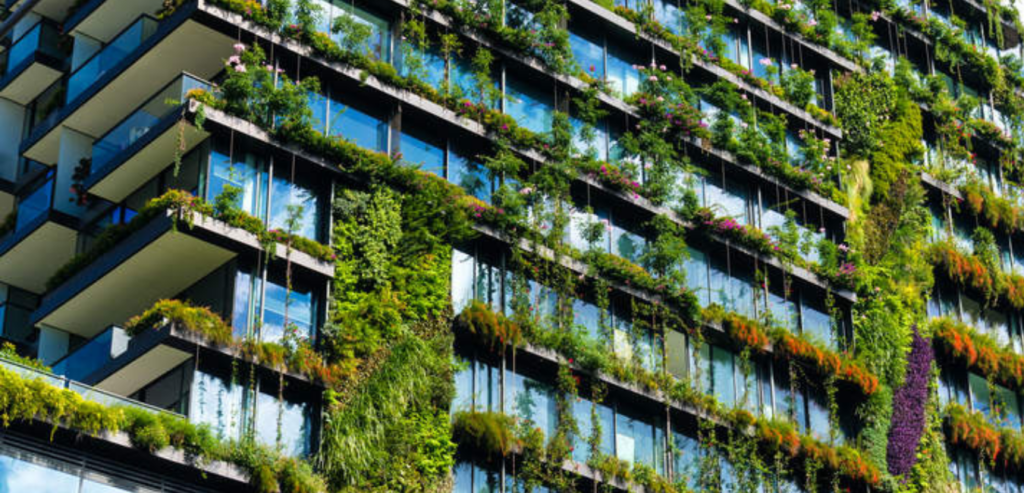The Advancements Of Civil Engineering In Carbon-neutral Buildings

Buildings play a significant role in impacting climate change. Globally, buildings contribute almost 40% of C02 emissions and 50% of energy consumption. This fact has pushed the building sector to focus on creating sustainable and carbon-neutral buildings. The Paradise Building in the United Kingdom has recently been named one of the top 10 carbon-neutral buildings. In this post, we will delve deeper into what the Paradise Building is, its features, and why it is essential for a sustainable future.
Introduction
The Paradise Building is located in West London, near the Paddington Station. The building was designed by architect Robin Partington and developed by British Land and The Portman Estate, with Webb Yates as the structural engineering firm. The building is a retail and office space, used mainly by WeWork and Marks & Spencer.
The Paradise Building's primary objective was to create a sustainable and energy-efficient building. The building uses a combination of passive design strategies, such as natural ventilation and daylight harvesting, and active systems, such as photovoltaic panels, to achieve a carbon-neutral status.
Key Features
The Paradise Building stands out as a sustainable building for several reasons. Here are some of its key features:
1. Photovoltaic Panels
The Paradise Building has over 2000 photovoltaic panels on its roof. These panels generate renewable energy that reduces the building's reliance on grid electricity.
2. Natural Ventilation
To improve indoor air quality, the building was designed to allow natural ventilation. This means that the building's occupants can control the amount of fresh air that comes into their space.
3. Thermal Mass
The building's design also includes high thermal mass elements, such as exposed concrete ceilings and floors, which help to regulate the temperatures within the building.
4. Rainwater Harvesting
The building also has a rainwater harvesting system, which is used to flush toilets and irrigate the green roof.
5. Biodiversity Enhancement
Finally, the Paradise Building has a green roof, which enhances the biodiversity in the surrounding urban environment. The roof is home to several plant species, which provide habitats for birds and insects.
FAQ
1. What does carbon-neutral mean?
A carbon-neutral building is a building that has a net zero carbon footprint. This means that the building's greenhouse gas emissions are balanced by its renewable energy production, carbon offsets, and/or carbon credits.
2. How does the Paradise Building achieve carbon-neutrality?
The Paradise Building achieves carbon-neutrality through a combination of passive design strategies and active systems. These include photovoltaic panels, natural ventilation, thermal mass, rainwater harvesting, and a green roof.
3. Why is it essential to have carbon-neutral buildings?
Buildings contribute significantly to global carbon emissions and energy consumption. By creating carbon-neutral buildings, we can reduce our overall carbon footprint and help mitigate climate change.
4. What are the advantages of having sustainable buildings?
Sustainable buildings have several advantages. They reduce energy consumption and operating costs, improve indoor air quality, enhance the biodiversity in urban areas, and create a healthier and more productive environment for occupants.
Conclusion
The Paradise Building is a remarkable example of a sustainable and carbon-neutral building. Its features demonstrate that it is possible to create energy-efficient buildings that reduce carbon emissions while enhancing the surrounding urban environment's biodiversity. By creating more sustainable buildings, we can reduce our overall carbon footprint and contribute towards a more sustainable future.
This building also shows that engineers play an essential role in creating sustainable buildings. Webb Yates engineers are experts in structural engineering and have a deep understanding of sustainable design strategies. They were instrumental in creating the Paradise Building, and their expertise contributed significantly to the building's success.
In conclusion, sustainable buildings are crucial for a better future. We need to strive towards creating more carbon-neutral buildings like the Paradise Building to reduce our impact on the planet and create healthier environments for all.


Post a Comment for "The Advancements Of Civil Engineering In Carbon-neutral Buildings"